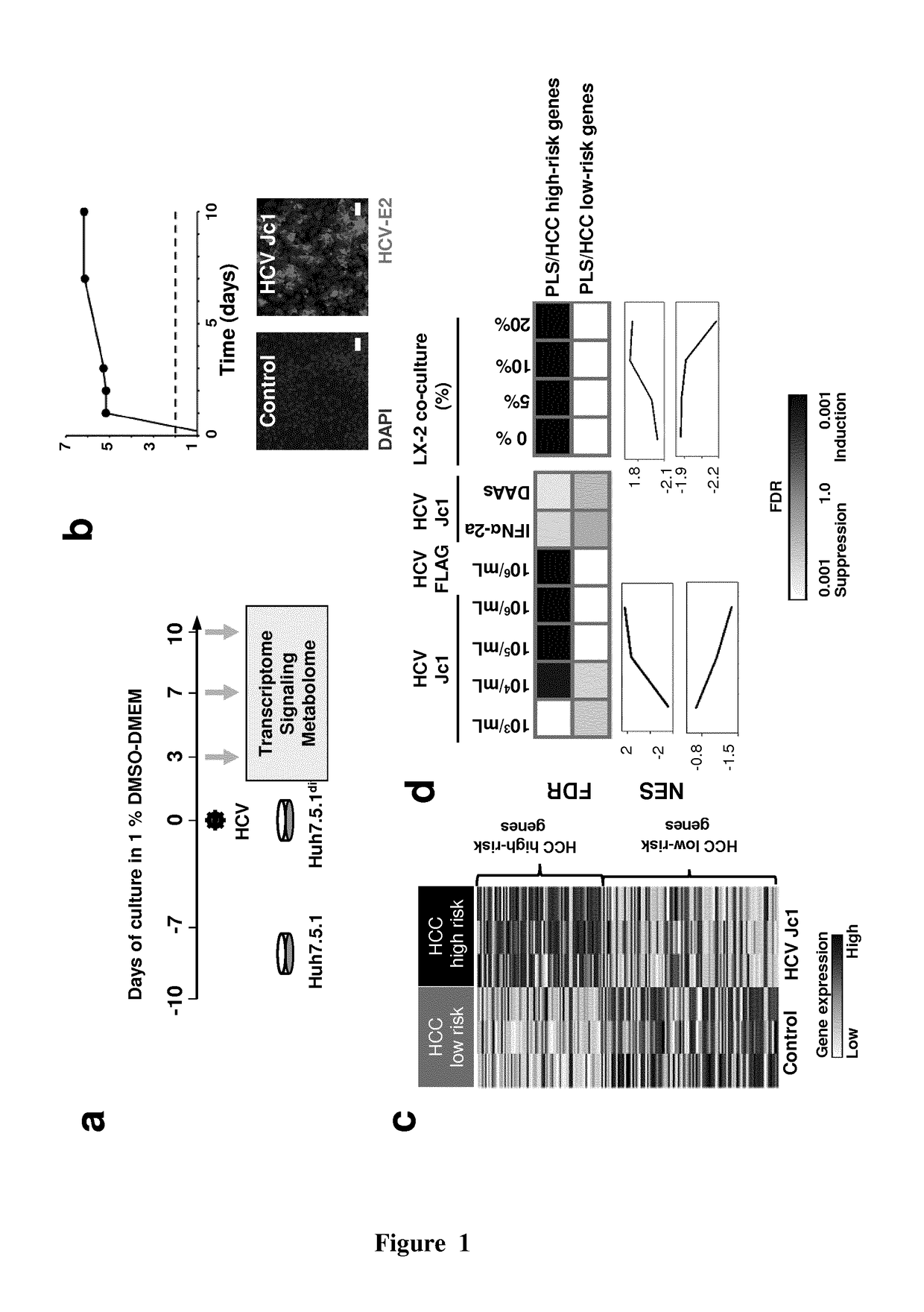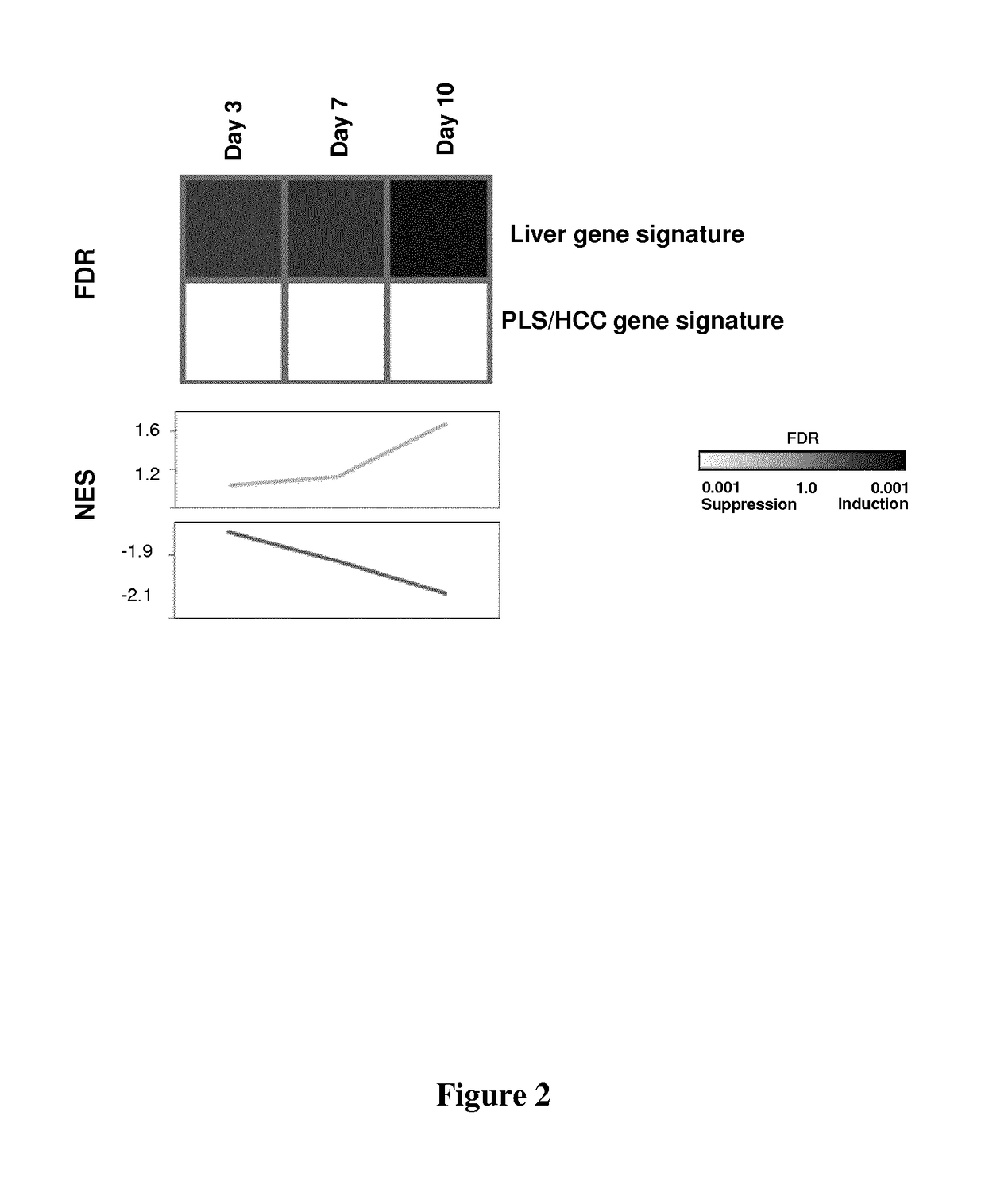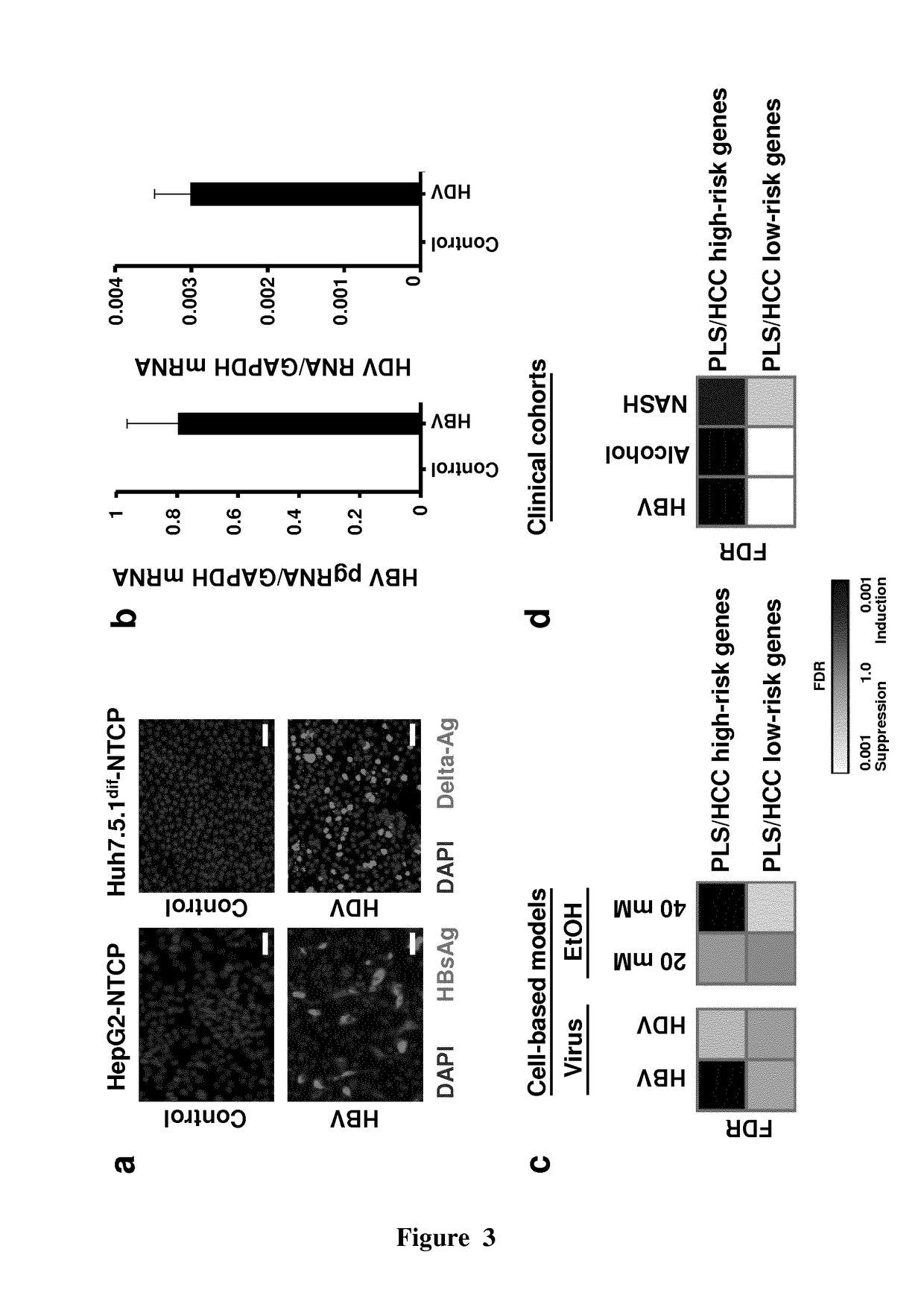Clinical gene signature-based human cell culture model and uses thereof
a human cell culture and gene signature technology, applied in the field of clinical gene signature-based human cell culture model, can solve the problems of liver cirrhosis progression and hcc development in patents with established cirrhosis and advanced fibrosis, and the risk of liver cirrhosis progression and hcc development persisting, so as to improve the dismal prognosis of patients
- Summary
- Abstract
- Description
- Claims
- Application Information
AI Technical Summary
Benefits of technology
Problems solved by technology
Method used
Image
Examples
example 1
Materials and Methods
[0182]Human Subjects. Human material, including serum from patients with chronic HBV or HDV infection treated at the Strasbourg University Hospitals (Strasbourg, France), was obtained after informed consent from all subjects. Human liver tissues were obtained from HCC patients undergoing liver resection after informed consent from all patients for de-identified use at the Mount Sinai Hospital (New York, N.Y., USA). The protocols were approved by the local Ethics Committee for the University Strasbourg Hospitals and Mount Sinai Hospital, respectively.
[0183]Reagents and Antibodies. Absolute ethanol was purchased from Thermo Fisher Scientific (Waltham, Mass., USA); erlotinib from LC Laboratories (Woburn, Mass., USA); interferon-alpha 2a from Roche (Penzberg, Germany); pioglitazone, primidone, triamcinolone, pimozide, dilazep HCl2, dorzolamide and dimethyl sulfoxide (DMSO) from Sigma-Aldrich (St. Louis, Mo., USA); Fr180204 from Merk (Billerica, Mass., USA); oxetacai...
example 2
Liver Nonparenchymal Co-culture Systems Model for Biomarker and Drug Discovery to Prevent and Treat Liver Disease Progression and Liver Cancer Development
[0218]The Applicants performed co-culture studies of hepatocyte-like cells with either stellate cell lines or Kupffer cells, and studied the impact of non-parenchymal cells on the transcriptional reprogramming, which is associated with the genesis of the HCC risk signature.
Materials and Methods
[0219]Cell lines and culture. Hepatocellular carcinoma-derived Huh7.5.1 (Zhong et al., PNAS USA, 2005, 102: 9294-9299) and human stellate LX-2 or TWNT-4 cells (Xu et al., Gut, 2005, 54: 142-151; Shibata et al., Cell Transplant., 2003, 12: 499-507) have been described. Human THP-1 monocytes and Kupffer cells were obtained from ATCC and Life Technologies, respectively. For co-culture experiments, 2.5×104 Huh7.5.1 cells were seeded together with 10% of total cells of either LX-2 or TWNT-4 hepatic stellate cells or 20% of THP-1 cells. Furthermore...
example 3
Modeling a Patient-Derived Pan-Etiology 32-Gene PLS / HCC Signature in Non-Hepatic Cell Lines to Identify Biomarkers and Drugs Targeting Disease Progression and Cancer in General
[0227]The Applicants have tested the induction of the 32-gene signature in non-hepatic cancer cell lines derived from the colon (Caco-2 / TC7), or the cervix (HeLa) exposed to ethanol, and HCV-permissive human embryonic kidney engineered to express HCV hots factors (293T-4R / miR122) infected with HCV.
Materials and Methods
[0228]Cell lines and culture. Hepatocellular carcinoma-derived Huh7 (Verrier et al., Hepatology, 2016: 53: 35-48), and colon Caco-2 / TC7 (Mailly et al., Nature Biotechnol., 2015, 33: 549-554) have been described. HeLa cells were obtained from ATCC. Cells were cultured in Dulbecco's Modified Eagle Medium (DMEM). 293T-4R / miR122 cells (described in Da Costa et al., J. Virol., 2012, 86: 11919-11925) were cultured in DMEM containing puromycin and blasticidin.
[0229]Ethanol treatment of hepatic and nonhe...
PUM
 Login to View More
Login to View More Abstract
Description
Claims
Application Information
 Login to View More
Login to View More - R&D
- Intellectual Property
- Life Sciences
- Materials
- Tech Scout
- Unparalleled Data Quality
- Higher Quality Content
- 60% Fewer Hallucinations
Browse by: Latest US Patents, China's latest patents, Technical Efficacy Thesaurus, Application Domain, Technology Topic, Popular Technical Reports.
© 2025 PatSnap. All rights reserved.Legal|Privacy policy|Modern Slavery Act Transparency Statement|Sitemap|About US| Contact US: help@patsnap.com



